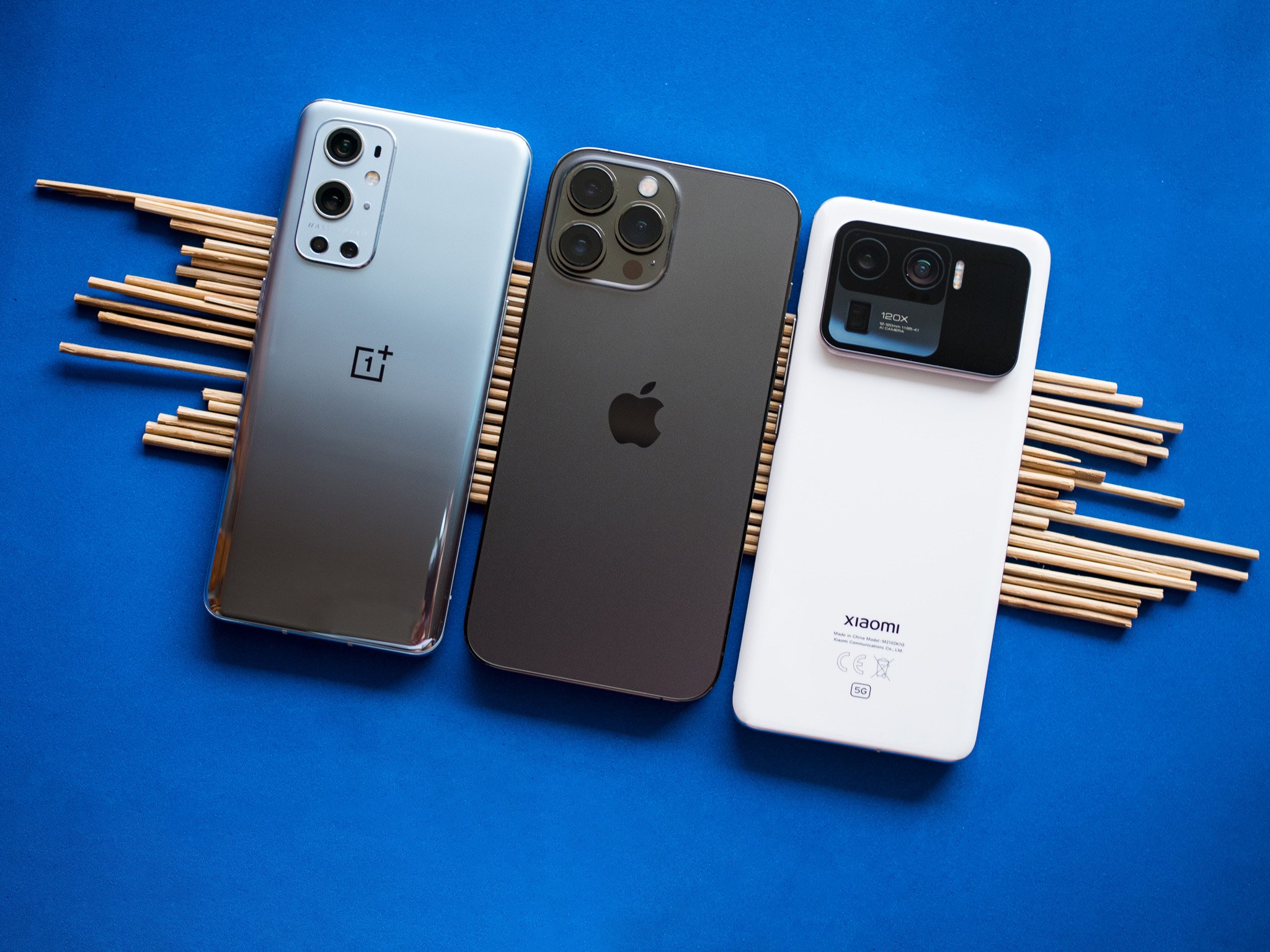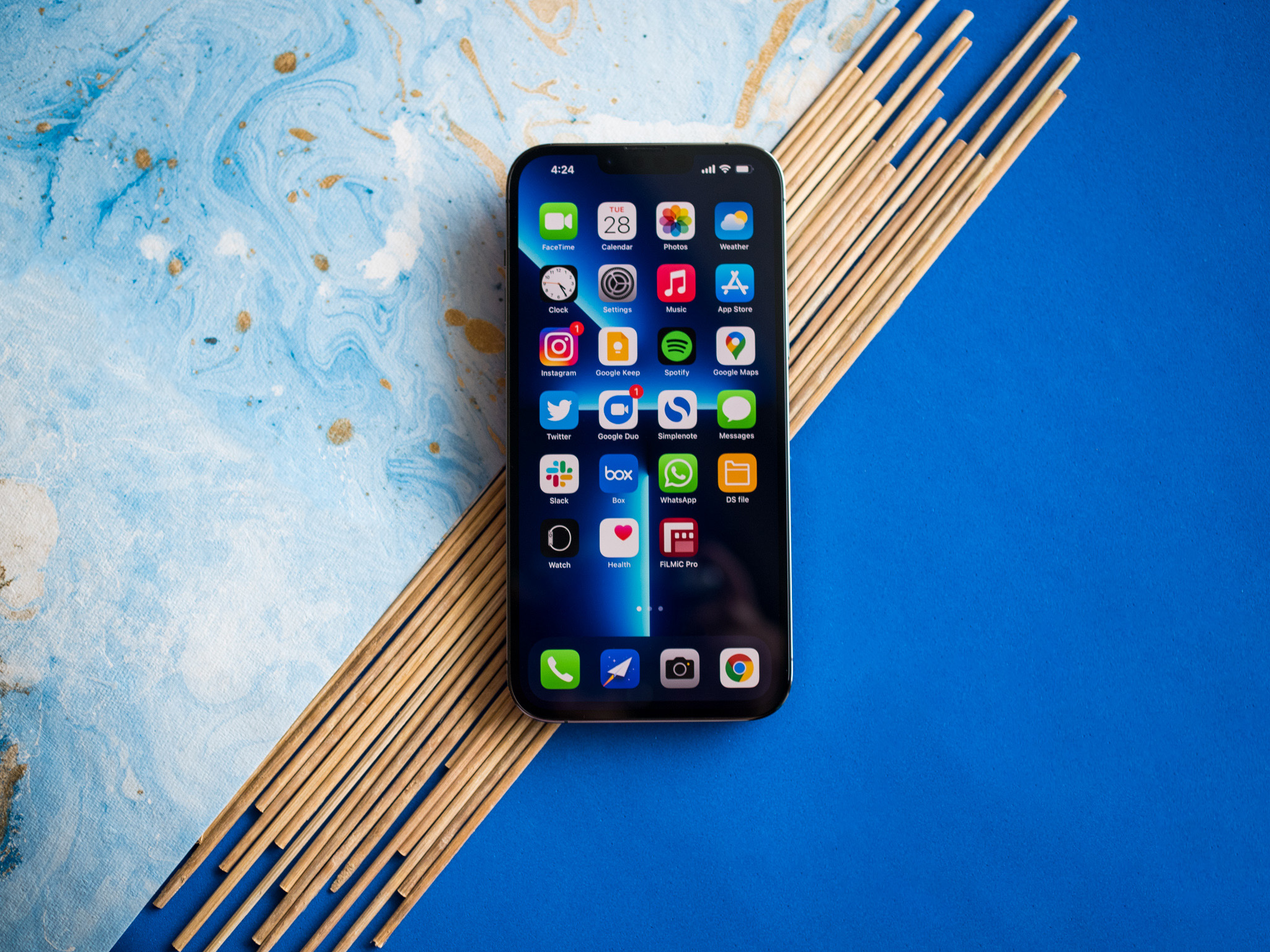Apple scores a big win in China with the iPhone 13, but it won't last

Apple is doing all the right things in China, but its Android rivals will catch up soon.
Samsung and Apple dominate phone sales charts in North America, but that's not the case in other global markets. For instance, Samsung has less than a 1% market share in China, with the South Korean giant overshadowed by its Chinese counterparts. Apple fares slightly better, with the iPhone manufacturer amassing a 13% market share in Q3 2021 — a year-on-year increase of 48%.
Apple ended Q3 as the fifth-largest phone brand in China, but the introduction of the iPhone 13 turned the momentum in its favor; in October, it became the largest phone brand in the country, overtaking the best Android phones from Xiaomi, Honor, OPPO, and Vivo. October sales figures from Counterpoint show the scale of this achievement, with Apple going from a 13% share to 22% in the course of a month.
The launch of the iPhone 13 was the catalyst for the turnaround, but that alone isn't the reason. To find out more, I talked to Ivan Lam, a Senior Research Analyst at Counterpoint Research, to understand what's going on. Lam attributes the uptick in iPhone sales to three factors: a retail strategy that's finally taking off, Huawei's decline, and most of all, aggressive pricing.
Huawei's decline combined with aggressive pricing for the iPhone 13 allowed Apple to thrive in China.
"Huawei is continuing to lose ground in the high-end market, and while OPPO and Xiaomi are starting to focus on the high-end segment, they haven't made much headway," said Lam. For some context, Huawei was the outright leader in China's phone segment in Q3 2020 with a 30% market share, and that figure now stands at a meager 8%. The U.S. trade ban has effectively killed off Huawei's business even in its home market, with the brand unable to access the latest technology.
Kiranjeet Kaur, an Associate Research Director at IDC APAC, notes that Apple positioned itself ideally to fill the void left by Huawei as it has a better brand image in the premium segment (over $600) than its Android rivals. "In other words, there is lesser competition for iPhone 13 series this year," said Kaur.
Kaur said that another change this year is a "favorable pricing strategy" for the iPhone 13 that included launching the phone at a lower price point than the iPhone 12, invigorating sales. The groundwork for this move was laid last year, when Apple started allowing iPhones to be sold at online storefronts, giving e-commerce stores the ability to heavily subsidize the iPhone 12 for this year's holiday sale season. Enticing discounts for the iPhone 12 combined with aggressive pricing for the iPhone 13 created the ideal situation for Apple in China.
Counterpoint's Lam points to a maturing market with an increasing average selling price (ASP), which once again benefits Apple. The ASP in Q3 2020 was $314, but it has shot up to $383 in Q1 2021 and has held steady throughout the year. Android manufacturers are shifting their focus to the mid-range and high-end segments to better cater to the shifting demand, but they still don't have the cachet that Apple enjoys. That allows the iPhone maker to pull out ahead of its Android rivals, says Lam.
The global chip shortage also contributed to lower-than-normal sales for the likes of Vivo, OPPO, and Xiaomi, with Android manufacturers, in general, struggling to meet demand in the mid-tier and high-end segments. Lam says Apple managed to weather the shortages much better because of its scale, which has played a part in the sales increase in October.
Android brands should regain momentum with 2022 flagships.
Kaur is bullish on Apple's short-term strategy, pointing to its retail presence and brand recognition as a definite advantage. "We believe Apple's advantage in the premium market will continue in the short term, as other Android brands have yet to establish their own premium brand image. The wide online and retail presence — including its own Apple Stores — in the market has allowed Apple to reach large and small towns in the China market."
But can Apple continue the momentum going into 2022? Lam says iPhones should sell well for the next two quarters as they're virtually unchallenged at the moment, but with OPPO, Vivo, and Xiaomi set to launch their 2022 flagships in the coming months, that dynamic will change. What they lack in brand awareness in this category, they're looking to make up in value, with the flagships slated to undercut the iPhone 13 while offering better hardware.
OPPO and Vivo, in particular, can use their existing offline distribution network to go on the offensive. These two brands control over 70% of the offline market, and they can leverage that to their advantage, much like what Samsung does in other markets. Xiaomi is also making inroads into the offline segment, but Lam notes that it isn't quite on the same level as its BBK rivals. As for the now standalone Honor, Lam says its offerings are too similar to what's already available in the market, and it will struggle to differentiate itself in 2022.
According to Bloomberg, Apple is already slashing estimates as it sees a decrease in demand for the holiday season. That brings us to the bigger problem for the Chinese phone market: an overall sales slowdown. The 75 million sales figure in Q2 2021 was the lowest in a decade, and that situation isn't likely to change. "The entire market is plateauing; 5G is too costly, with plans starting at $20, and the 4G market is fully saturated," said Lam. "Chinese customers are also holding on to their phones for longer, with upgrade cycles now averaging two years."
IDC's estimates suggest the Chinese market contracted by 0.6% this year, with the PC and tablet category seeing more demand. "The pandemic drove more demand for PCs and tablets than smartphones as smartphone penetration in China is already quite high," said Kaur.
With the market getting saturated, it will be difficult for brands to differentiate their products. For its part, Apple did a brilliant job seizing vital market share from Huawei, but with Chinese manufacturers redoubling their efforts in the high-end segment, they should regain momentum in the coming quarters.



No comments